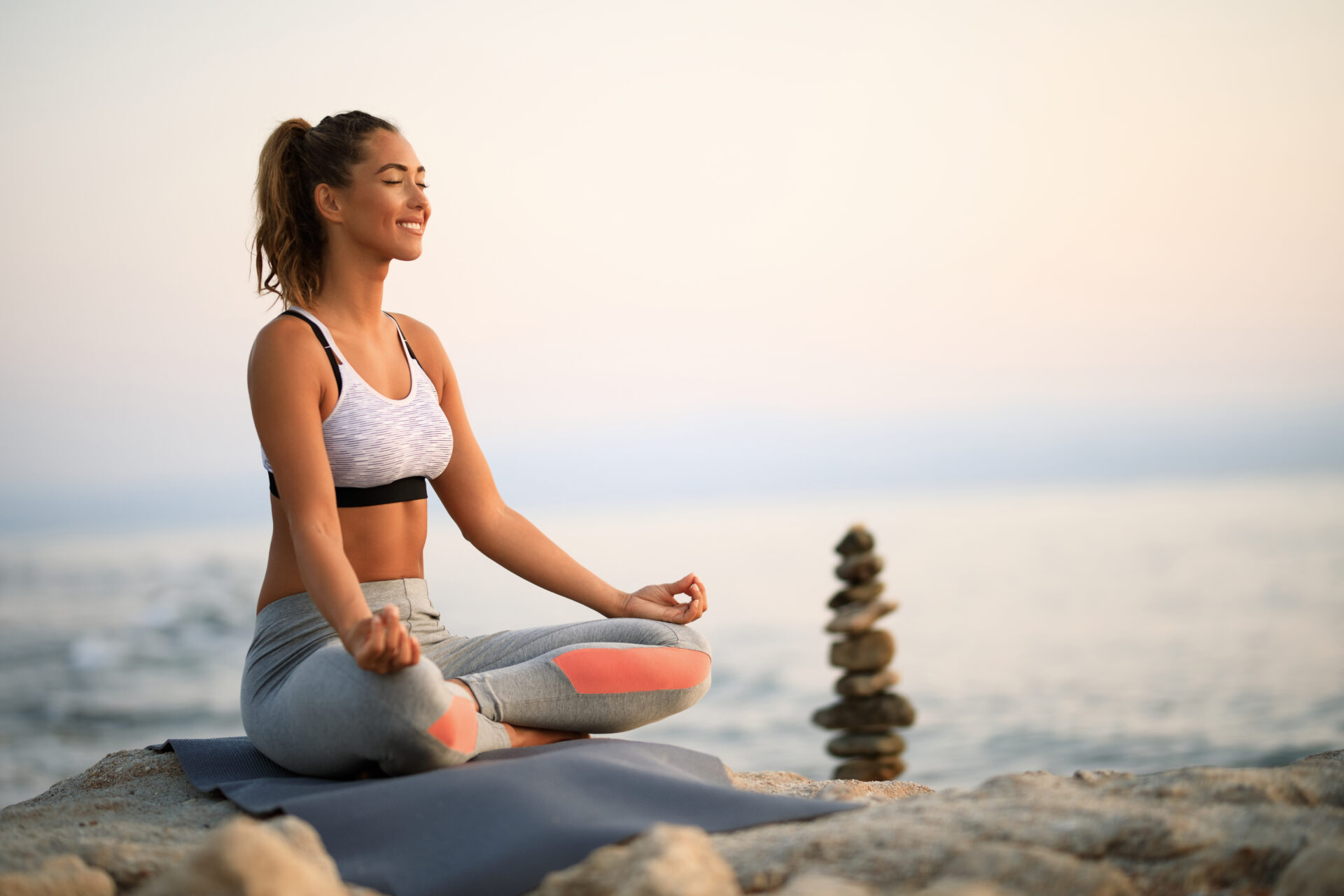7 Empowering Mindfulness Practices to Elevate Your Mental Health in 2024
Contents
- 1 7 Empowering Mindfulness Practices to Elevate Your Mental Health in 2024
- 1.1 Understanding Mindfulness in Mental Health
- 1.2 Scientific Validation of Mindfulness Benefits
- 1.3 Holistic Enhancement of Psychological Well-being
- 1.4
- 1.5 7 Mindfulness Practices to Prioritize Mental Health in 2024
- 1.6 read more posts
- 1.7 read more posts
- 1.8 read more posts
- 1.9 Getting the Most Out of Your Mindfulness Journey
- 1.10 read more posts
- 1.11 FAQs:
- 1.12 read more posts
Read DISCLAIMER
Elevate mental health in 2024 with these empowering mindfulness practices! From mindful breathing to gratitude, discover transformative techniques for a balanced, fulfilling life.

Understanding Mindfulness in Mental Health
The practice of cultivating present-moment awareness without passing judgment is the central idea of mindfulness. It invites people to let go of judgments about what is good or wrong and to fully engage with whatever sensation, feeling, or idea they are experiencing at the moment. People are able to interact with their internal and external experiences more purposefully as a result of this elevated consciousness.
A non-reactive and compassionate attitude to self-awareness is fostered by mindfulness, which places an emphasis on accepting and noticing thoughts and feelings as they come. By redefining their connection with stress, anxiety, and sadness, people may effectively manage these emotions by mastering this skill. Greater resilience and clarity in overcoming life’s obstacles are made possible by this approach.
Scientific Validation of Mindfulness Benefits
A large quantity of scientific data supports the effectiveness of mindfulness techniques. Research on the benefits of mindfulness for mental health is indisputable. Regular practice of mindfulness meditation has been connected to structural alterations in the brain, especially in regions related to self-awareness and emotion control.
Moreover, factual data indicates that regular mindfulness meditation might lessen the symptoms of a number of different mental health issues. It has been demonstrated to lessen the likelihood that depression will reoccur, ease anxiety problems, and provide people the coping skills they need to handle stress well.
Holistic Enhancement of Psychological Well-being
Beyond treating particular mental health issues, mindfulness improves psychological wellness in general. People may cultivate an atmosphere of acceptance and self-compassion, which makes them more resilient. They can handle life’s ups and downs with more emotional equilibrium and flexibility because of their resilience.
Additionally, mindfulness has been connected to better cognitive performance, which includes sharper concentration, increased attention, and better decision-making abilities. This increased level of cognitive awareness improves problem-solving skills and builds a stronger bond between the individual and the environment.
7 Mindfulness Practices to Prioritize Mental Health in 2024
1. Mindful Breathing:

A fundamental component of mindfulness techniques, mindful breathing is an effective way to lower stress, promote mental clarity, and focus oneself in the present. Intentional and focused breathing are the key components of this straightforward yet profound method that help people access a state of awareness and calmness.
Understanding Mindful Breathing
Simple breathing is the core of mindfulness. People may practice becoming more aware of the present moment by focusing on their breathing. Finding a comfortable sitting or sleeping position and letting the body relax are the usual first steps of the practice.
Inhalation and Exhalation:
1. Inhalation: Filling the lungs with air by means of the nose and taking a deep breath. The diaphragm’s movement and the chest’s expansion are recognized and noted as sensations.
2. Exhalation: Ease away any internal tension or stress by slowly releasing the breath via the nose or mouth. The feeling that the breath is leaving the body stays in focus.
Benefits of Mindful Breathing
Anchoring to the Present: Using mindful breathing as an anchor helps focus attention away from worries, fears, or distracting thoughts. It brings people back to the present moment by shifting attention to the sense of breathing.
Reduction of Stress and Relaxation: Intentional, deep breathing sets off the body’s relaxation response, telling the neurological system to go from a fight-or-flight reaction to a rest-and-digest response. This helps lower stress chemicals like cortisol and encourages serenity.
Focus and Mental Clarity: Consistent mindful breathing practice improves focus and mental clarity, which in turn improves cognitive performance. People who practice staying in the now might become more focused and productive.
Emotional Regulation: By encouraging a non-reactive attitude toward emotions, mindful breathing develops emotional resilience. It makes a void between stimuli and reaction, enabling people to react to difficult circumstances with greater expertise.
Including Mindful Breathing in Everyday Activities
It is possible to incorporate mindful breathing into everyday activities and not just save it for special meditation sessions. A few minutes of concentrated breathing at the beginning of the day sets a pleasant tone for the day. A sense of calm and center may also be encouraged by employing cues like taking a few thoughtful breaths while under stress or practicing mindful breathing before significant undertakings.
2. Body Scan Meditation:

A mindfulness technique called body scan meditation includes methodically focusing attention on various body areas to promote profound relaxation and increased awareness. By fostering a sense of calm and releasing stored-up bodily tension, this approach helps people to connect with their physical experiences.
Comprehending the Body Scan Meditation
Usually, the exercise starts with closing your eyes and choosing a comfortable posture, such as sitting or lying down. Following that, the practitioner focuses on various bodily parts, progressively addressing each one, either at the toes or the top of the head.
Step-by-Step Process:
1. Focused Attention: Focus is directed toward the sensations in a specific area of the body, beginning at one end. This might involve paying attention to any physical sensations—such as pressure, warmth, tingling, or any other—without passing judgment or evaluating them.
2. Mindful Observation: People notice any tension, discomfort, or relaxation they may be feeling in each body part as their focus shifts from one to the next. The secret is to be completely in the moment and not respond to any feelings that come up.
3. Releasing Tension: Practitioners are advised to breathe into the affected area and visualize the breath gradually releasing any tension or discomfort. The goal of this exercise is to encourage comfort and relaxation in the body.
4. Finishing the Scan: The body scan meditation continues until all body parts have been attended to, ending with a general feeling of tranquility and relaxation.
Advantages of Meditation with Body Scan
Physical Relaxation: People may recognize and alleviate physical stress by paying methodical attention to every area of their bodies. This can facilitate a more relaxed mood by easing aches, pains, and stiffness in the muscles.
Enhanced Body Awareness: The practice of body scan meditation fosters a closer relationship between the mind and body. People who are attuned to their physical senses become more aware of their body’s messages and reactions.
Stress Reduction: By inducing the relaxation response in the body, this exercise lessens the physiological impacts of stress. The neurological system changes to a more relaxed state as tension is removed, which helps with stress management.
Better Presence and Mindfulness: By encouraging a non-judgmental, present-centered awareness of physical sensations, body scan meditation develops mindfulness. This improved awareness might affect everyday experiences outside of the meditation session.
Including in Everyday Activities
Based on personal preferences, body scan meditation can be done at any time of day. It is a technique for relieving tension, unwinding, and getting in touch with your body’s signals. Including it in regular activities, like taking a break or going to bed early, can help foster inner peace and wellbeing.
3. Mindful Walking:

Walking mindfully is paying conscious attention to the present moment and walking with intention. It is a type of walking meditation. Walking is a great way for people to completely engage their senses, build awareness, and establish a deeper connection with their environment.
Comprehending the Concept of Mindful Walking
Present-Moment Awareness: Mindful walking helps people direct their attention away from daydreaming and onto the feelings and experiences of walking. It entails paying attention to how the body moves, how the earth feels under the feet, and how each stride has a rhythm.
Activating the Senses: During a mindful stroll, walking is not the only thing that requires attention. It is recommended that practitioners take note of the sights, sounds, scents, and even the feel of the air against their skin. The connection to the present moment is strengthened by this multisensory experience.
Grounding in the Environment: Walking mindfully places an emphasis on having a close relationship with the natural world. Every sensory experience, be it the sound of birds singing, the warmth of the sun, or the rustle of leaves, acts as an anchor to bring people back to the present.
Benefits of Mindful Walking
Stress Reduction and Relaxation: Taking a thoughtful stroll might aid in lowering tension and promoting relaxation. Deliberately concentrating on the here and now helps quiet the mind and encourage serenity.
Better Mindfulness and Attention: Walking with mindfulness increases one’s capacity for maintaining attention. Through refocusing attention on the current moment, people become more adept at being in the moment.
Improved Connection with Nature: Taking a mindful stroll outside allows you to take in the beauty of the natural world. A sense of peace and wellbeing is facilitated by this relationship with nature.
Physical and Mental Well-Being: Consistently engaging in mindful walking can enhance one’s physical health and general state of mind. It promotes mental clarity and emotional equilibrium and acts as a mild type of exercise.
Including Mindful Walking in Everyday Activities
You may practice mindful walking anywhere, whether it’s at a park, on a nature trail, or just for a quick stroll around the neighborhood. It doesn’t require a certain place or time. Moments of mindfulness during a hectic day can be achieved by incorporating this practice into everyday routines, such as taking thoughtful breaks during work hours or incorporating it into leisurely walks.
read more posts
4. Daily Gratitude Practice:

A strong and transforming habit, the daily thankfulness practice is consciously identifying and valuing life’s good things. Gratitude is an attitude that may be developed by actively recognizing the gifts in life, no matter how minor. This can boost happiness and general wellbeing.
Understanding Daily Gratitude Practice
Cultivating Awareness: This technique focuses on purposefully turning one’s attention to life’s good things. It invites people to become more conscious of the kindness and plenty present in their everyday lives.
Journaling or Reflection: This technique usually entails maintaining a gratitude diary, in which people list three things for which they are thankful each day, either at first or at the conclusion. Writing it down strengthens the habit and provides a concrete reminder of benefits.
Emphasis on Appreciation: Appreciating small pleasures, acts of generosity, dependable relationships, individual accomplishments, and even the beauty of nature is valued just as much as huge gestures or significant occasions.
Benefits of Daily Gratitude Practice
Positive Mindset: Expressing appreciation on a regular basis encourages a more upbeat attitude on life by drawing attention away from negativity and emotions of lack. It inspires people to find the positive even in the face of adversity.
Enhanced Mental Health: Research has indicated that cultivating appreciation can lead to a reduction in the signs and symptoms of stress, anxiety, and depression. It strengthens psychological health generally and encourages emotional resilience.
Improved Relationships: Showing others appreciation makes people feel more connected to one another and in deeper relationships. It fosters an environment of gratitude and optimism in social relationships.
Enhanced Resilience: People become more adaptive and capable of overcoming adversity when they concentrate on their blessings. Their ability to bounce back from setbacks is a result of their resilience.
Including a Daily Gratitude Practice in Everyday Living
Gratitude is a habit that is easy to incorporate into everyday life. Whether it be via writing, meditation, or vocal affirmations, dedicating a little period of time each day to introspection may help cultivate the practice of acknowledging and valuing one’s blessings.
5. Mindful Eating:

Bringing conscious awareness to the act of eating and concentrating on the ideas, feelings, and sensory sensations connected to food consumption is known as mindful eating. People who practice mindfulness during meals have a better connection to their bodies and a healthier relationship with food.
Comprehending Mindful Eating
Present-Moment Awareness: People who practice mindful eating are encouraged to use all of their senses while they eat. It entails observing the flavors, textures, scents, and even sounds that are connected to eating.
Being Aware of Your Body’s Cues: This entails being aware of your body’s signals regarding hunger, fullness, and contentment. People can have a better understanding of their nutritional demands by seeing how their bodies react to various meals.
Non-Judgmental Observation: Eating mindfully encourages a non-judgmental perspective on eating choices and behaviors. By emphasizing food experience rather than categorizing it as “good” or “bad,” it lessens the guilt that comes with eating.
Advantages of Intentional Eating
A more balanced and courteous relationship with food is developed by encouraging people to have a stronger connection to the eating experience. This leads to a healthier relationship with food. This may result in less emotional eating and healthier dietary choices.
Portion Control and Satiety Awareness: Eating mindfully encourages a better understanding of portion proportions and the identification of fullness. This can help you maintain a healthy weight and stop overeating.
Enjoyment and Satisfaction: Food may be enjoyed and satisfied more when it is eaten slowly, with an emphasis on taste and texture. It promotes a more fulfilling eating experience, which makes meals feel more fulfilling.
Better Digestion: By concentrating on the dining experience rather than speeding through meals, mindful eating helps the body digest food more effectively. This may result in less pain and better digestion.
Including Mindful Eating in Everyday Living
You can practice mindful eating at every meal and snack. The mindful eating experience may be improved by putting away distractions like screens, eating mindfully, chewing food well, and stopping in between bites. Furthermore, you may strengthen your bond with the meal by thanking the food and its source before you eat.
6. Mindfulness Apps and Resources:

The accessibility and practice of mindfulness have been completely transformed by mindfulness apps, which provide a wealth of information and instruments to assist people in their quest for increased awareness and wellbeing. Applications such as Headspace, Calm, Insight Timer, and several more offer easy access to a variety of mindfulness activities, breathing exercises, and guided meditations.
Comprehending Applications for Mindfulness
Guided Meditations: A variety of guided meditations conducted by qualified teachers are available through mindfulness applications. These sessions address a range of requirements, including emotional resilience, stress reduction, improved sleep, and focus.
Breathing exercises: A lot of applications include breathing techniques that help with stress relief, relaxation, and developing breath awareness. The length and difficulty of these workouts can be adjusted to suit personal tastes.
Tools and Techniques for Mindfulness: Apps frequently come with features that allow users to customize the mindfulness practice to meet their own requirements and preferences, such as timers, reminders, and progress monitoring.
Apps for Mindfulness Have Benefits
Accessibility and Convenience: People may more easily incorporate mindfulness into their everyday routines with the help of these applications, which offer a simple method to access mindfulness activities at any time and anywhere.
Variety and Diverse Content: Users may choose from a wide choice of mindfulness exercises, so they can experiment and see which one best suits their needs and objectives.
Structured Programs and Guidance: A lot of applications provide users with progressive mindfulness training through structured programs or courses, making mindfulness accessible to both novice and seasoned practitioners.
Support for Consistency: Functions like progress monitoring and reminders help to sustain a regular mindfulness practice, which promotes habit formation.
Including Apps for Mindfulness in Everyday Life
Apps for mindfulness may be easily incorporated into regular activities. People can set aside specific time for mindfulness by using these applications in the morning, before bed, or during breaks. Users may also discover what works best for them by experimenting with the many features and techniques offered by these applications.
read more posts
7. Mindful Communication:

The goal of mindful communication is to engage with others while paying close attention to the current moment. It entails paying attention, being transparent, and building empathy and understanding to establish a stronger bond.
Comprehending Mindful Communication
Active Listening: The first step in mindful communication is to listen intently and without passing judgment on what the other person is saying. It entails paying attention to the words, tone, and body language of the speaker without interjecting or planning your own answers in advance.
Presence and Attention: It’s important to be totally present and involved in the conversation. This entails reducing outside distractions, keeping eye contact, and demonstrating sincere curiosity about the speaker’s feelings and ideas.
Empathic and Non-reactive Reaction: Mindful communication promotes comprehension and empathy in response. It entails appreciating the speaker’s point of view without jumping to conclusions or forcing one’s own.
Advantages of Mindful Interaction
Deeper Connections: Meaningful interactions and deeper connections are fostered by conscious communication. People may communicate respect and understanding to one another and reinforce interpersonal ties by being totally present and attentive.
Decreased Misunderstandings: By making sure that both sides feel heard and understood, mindful communication reduces miscommunications. This can lessen tension and encourage cordial relationships.
Increased Empathy and Understanding: By taking into account the opinions and feelings of others, mindful communication practices foster empathy and understanding. As a result, interactions become more sympathetic and encouraging.
Improved Clarity and cooperation: Clearer communication promotes improved problem-solving and cooperation in a variety of contexts, including the workplace and interpersonal relationships. This is achieved by attentive listening and thoughtful responses.
Including Mindful Communication in Everyday Interactions
With deliberate effort, mindful communication may be included into regular conversations. Mindful communication is intentionally listening and responding carefully to others—whether they are family, friends, coworkers, or complete strangers.
read more posts
Getting the Most Out of Your Mindfulness Journey
In 2024, those who want to improve their mental health via mindfulness activities might reap great advantages by making these practices a regular part of their lives. Recall that patience and consistency are essential. Furthermore, by utilizing SEO strategies like include pertinent keywords, crafting captivating meta descriptions, and organizing information with distinct headings, this post will be able to reach and benefit a greater number of people looking for advice on mindfulness for mental health.
Practicing mindfulness is a great strategy to make mental health a top priority in the next year. You may develop a stronger feeling of contentment, tranquility, and resilience by incorporating these techniques into your everyday life. This will also help you maintain a healthy mind for a better future.
In embracing mindfulness for mental health, individuals embark on a transformative journey toward improved well-being and resilience. These empowering practices offer a gateway to a more balanced, fulfilling life. Understanding mindfulness as a tool for present-moment awareness and self-compassion sets the stage for managing stress, enhancing emotional resilience, and finding clarity in life’s challenges.
Scientifically validated benefits affirm the positive impact of mindfulness on mental health. Its holistic enhancement extends beyond addressing specific mental health concerns, contributing to improved cognitive performance, emotional equilibrium, and a strengthened connection with the self and the environment.
The seven mindfulness practices highlighted here—mindful breathing, body scan meditation, mindful walking, daily gratitude, mindful eating, mindfulness apps, and mindful communication—form a comprehensive toolkit. Each practice offers unique benefits, from stress reduction and relaxation to heightened awareness and deeper connections with oneself and others.
Integrating these practices into daily life is key. Mindful breathing can kickstart the day, body scan meditation can alleviate tension, while mindful walking and eating foster connection with the environment and our bodies. Gratitude practices enhance positivity, and mindfulness apps offer accessible support. Mindful communication enriches interactions, fostering deeper connections and reducing misunderstandings.
read more posts
FAQs:
1. How long should I practice mindful breathing each day?
– Starting with just a few minutes daily can yield benefits. Aim for 5-10 minutes and gradually extend as it feels comfortable.
2. Is mindful walking limited to certain places or times?
– Not at all! Mindful walking can be practiced anywhere, anytime—on a trail, in a park, or even around your neighborhood.
3. Can I practice body scan meditation lying down?
– Yes, body scan meditation can be practiced lying down, seated, or in any comfortable position that allows relaxation.
4. How frequently should I journal for daily gratitude practice?
– Consistency matters more than frequency. Aim for daily entries, but even a few times a week can be beneficial.
5. Are mindfulness apps suitable for beginners?
– Absolutely! Many apps offer beginner-friendly guided meditations and exercises.
6. How do I incorporate mindful eating into my routine?
– Slow down during meals, savor each bite, and focus on the sensory experiences while eating.
7. Can mindfulness practices replace professional mental health support?
– While beneficial, mindfulness practices complement professional support but aren’t substitutes for it when dealing with mental health concerns.
8. What’s the best time to practice mindful communication?
– Engaging in mindful communication is beneficial in any conversation, fostering deeper connections and mutual understanding.
9. How do I know if I’m practicing mindfulness effectively?
– You’ll notice increased awareness, a greater sense of calm, and improved focus with consistent practice.
10. Can mindfulness be practiced in short breaks during the day?
– Absolutely! Short, mindful breaks can recenter and refresh your mind amidst a busy day.
11. Are there specific mindfulness exercises for stress relief?
– Yes, mindful breathing and body scan meditation are particularly effective for stress reduction.
12. Can children benefit from mindfulness practices?
– Yes, mindfulness techniques can be adapted for children to help with focus, emotional regulation, and relaxation.
13. How do I choose the right mindfulness app for me?
– Experiment with various apps to find the interface, instructors, and practices that resonate with you.
14. Can mindfulness practices improve sleep quality?
– Yes, practicing mindfulness, especially before bedtime, can aid in relaxation and promote better sleep.
15. Is there a ‘best’ time of day to practice mindfulness?
– The ‘best’ time varies for each person; choose a time that aligns with your schedule and allows for consistent practice.

Your point of view caught my eye and was very interesting. Thanks. I have a question for you.
Can you be more specific about the content of your article? After reading it, I still have some doubts. Hope you can help me.
Can you be more specific about the content of your article? After reading it, I still have some doubts. Hope you can help me.
Your point of view caught my eye and was very interesting. Thanks. I have a question for you.
Can you be more specific about the content of your article? After reading it, I still have some doubts. Hope you can help me.
Thank you, your article surprised me, there is such an excellent point of view. Thank you for sharing, I learned a lot. https://www.binance.com/register?ref=P9L9FQKY
Your point of view caught my eye and was very interesting. Thanks. I have a question for you.
I don’t think the title of your article matches the content lol. Just kidding, mainly because I had some doubts after reading the article.
Thanks for sharing. I read many of your blog posts, cool, your blog is very good.